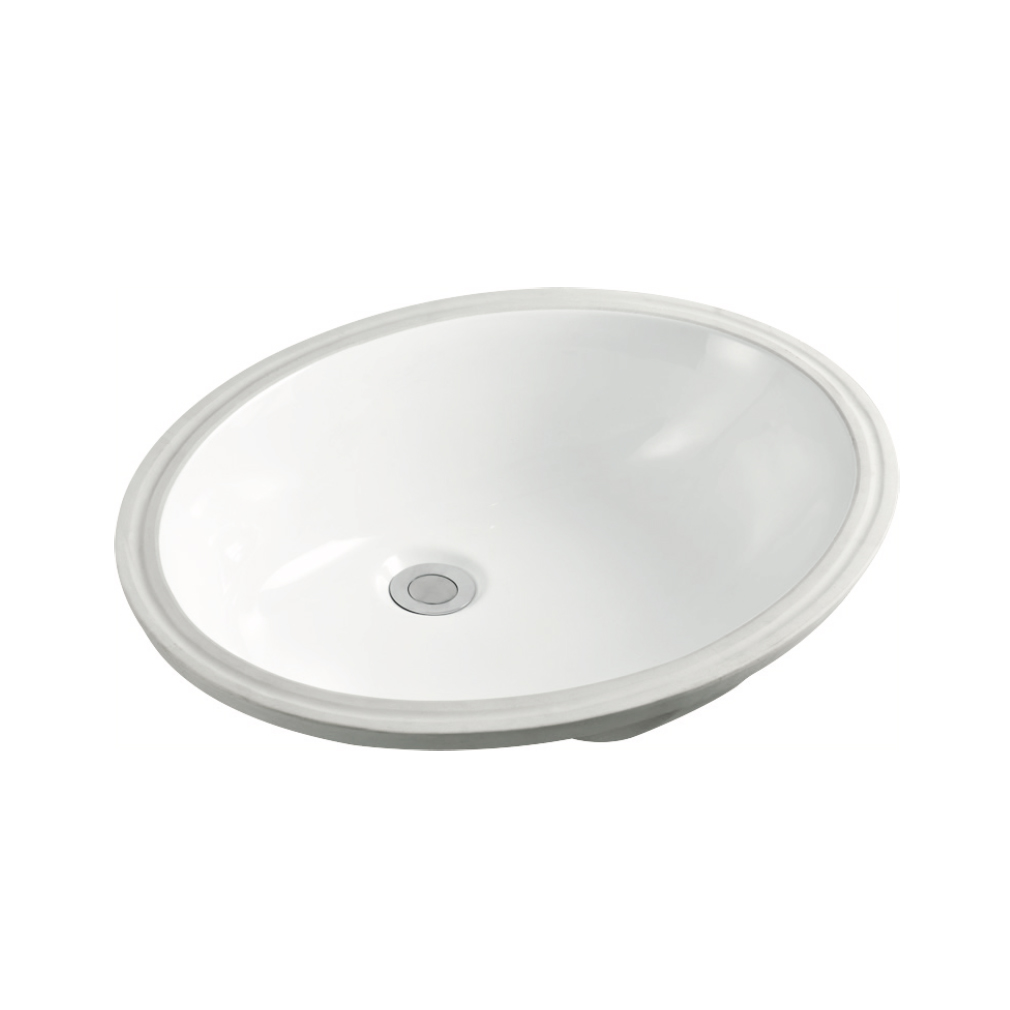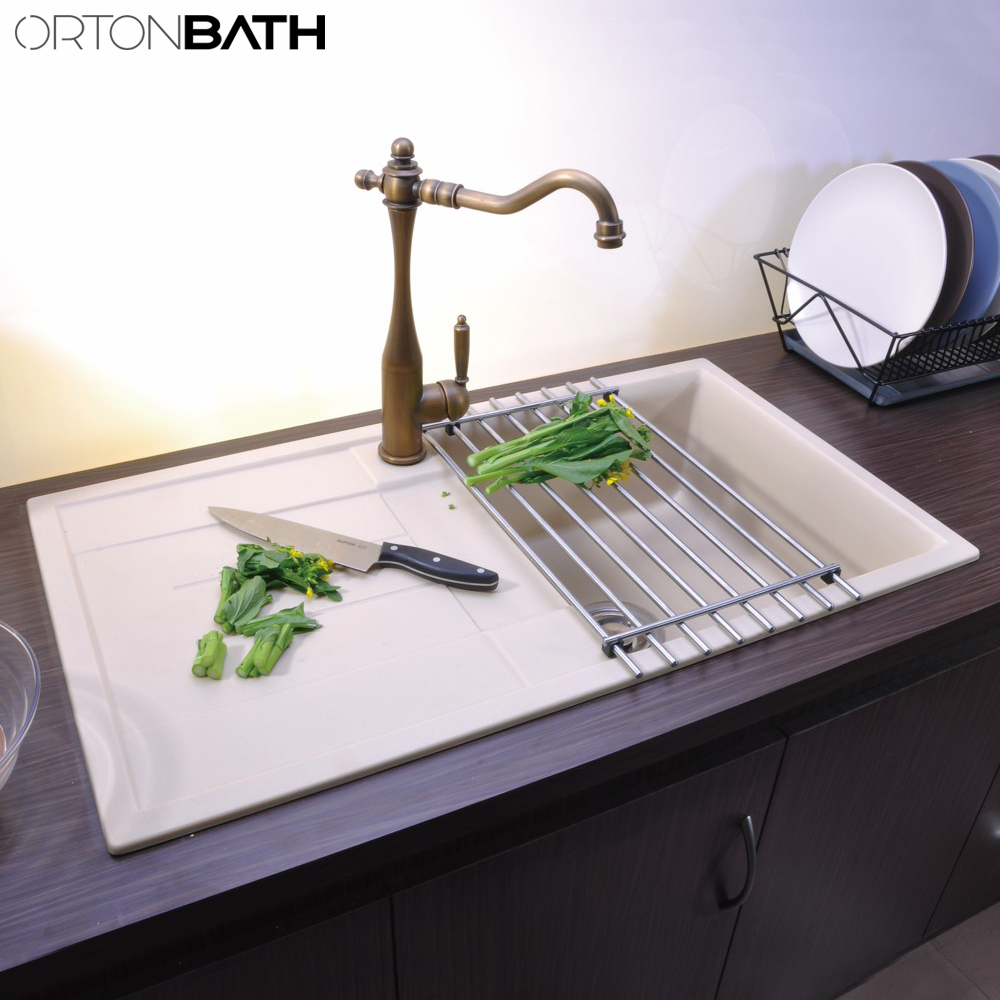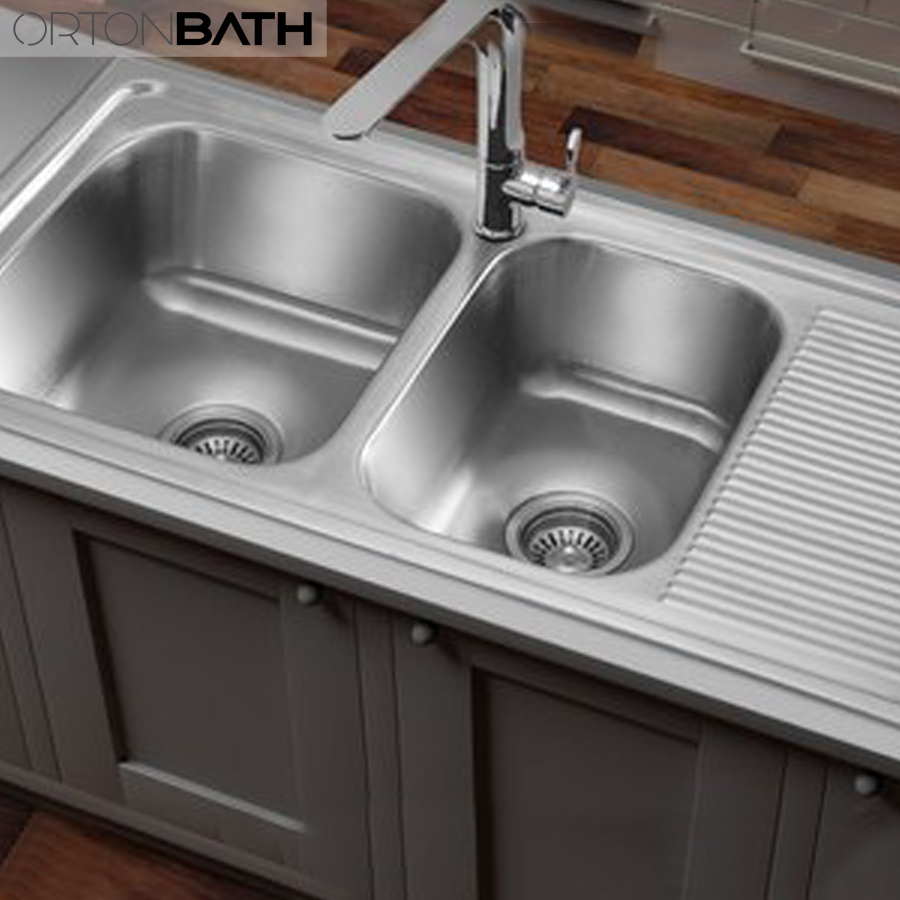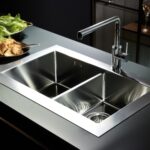Bathroom sinks come in many sizes, shapes, and colors. Not only the appearance, but also the material affect the style & practicability of your bathroom. What your bathroom sink is made of can affect its maintenance, durability, and, of course, style. From clay to woods to glass, understand the benefits of the different types of materials available for your bathroom sinks.
Ceramic:

Natural Stone

Stainless Steel

Stainless steel resists bacteria and germs, and are able to withstand the tough scrubbing. Additionally, this type of sink can be paired with most countertop materials because of its sleek color and look.
Features :
Stainless steel sinks are handcrafted from heavy gauge stainless steel and are extremely durable, resistant to corrosion and staining, but can be scratched or scuffed when not cared for properly.
Maintenance & Clear :
To maintain the condition of your stainless steel sink, simply clean daily with mild soap and warm water, and wipe the entire surface dry with a dry, clean, soft cloth after each use. Keep sink free of any standing water to prevent the build-up of mineral deposits that can affect the appearance of your sink. Because iron particles often develop rust spots in stainless steel surfaces, do not leave steel cookware or utensils on the surface of the sink for long periods of time. Do not use cleaners containing acids, harsh chemicals, or abrasives. Use a Stainless Steel Scratch-B-Gone Kit to remove minor scratches and maintain the beauty of your stainless steel fixture.
Resin
This stone-like material is made of a poly-resin blend, known as “man-made stone” Resin is solid and consistently colored throughout. Because it can be cast into nearly any form or size, resin sinks and tubs are available








